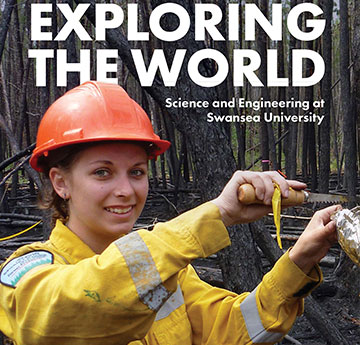Swansea University provides state-of-the-art facilities for students studying aerospace engineering. They are equipped with cutting-edge technology, including wind tunnels, flight simulators, and computer-aided design software. These facilities enable students to gain hands-on experience in designing and testing aerospace systems and explore the principles of aerodynamics, propulsion, and materials science. Our aerospace facilities at Swansea University provide a comprehensive and immersive learning environment for students pursuing a career in the aerospace industry.
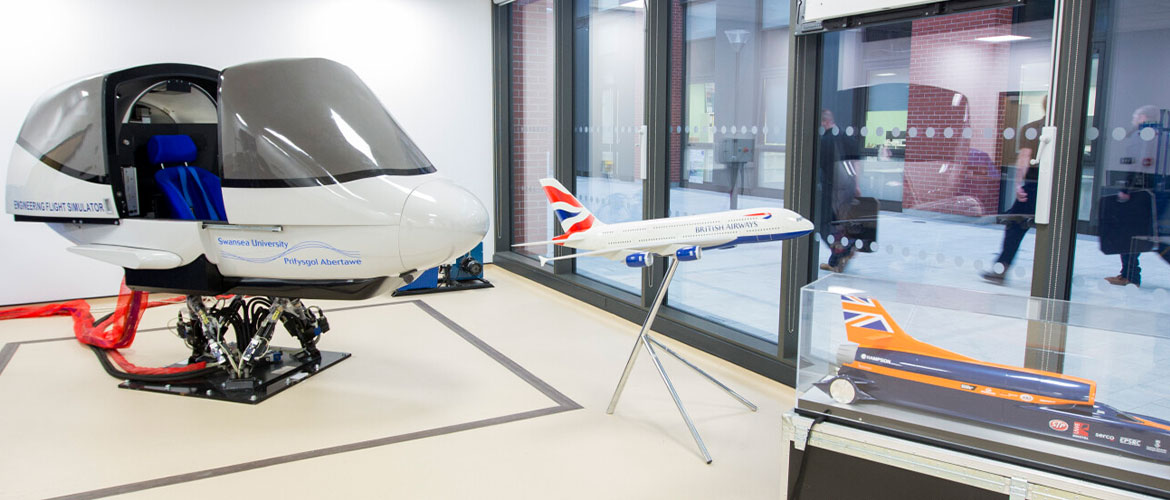
Flight Simulator Lab
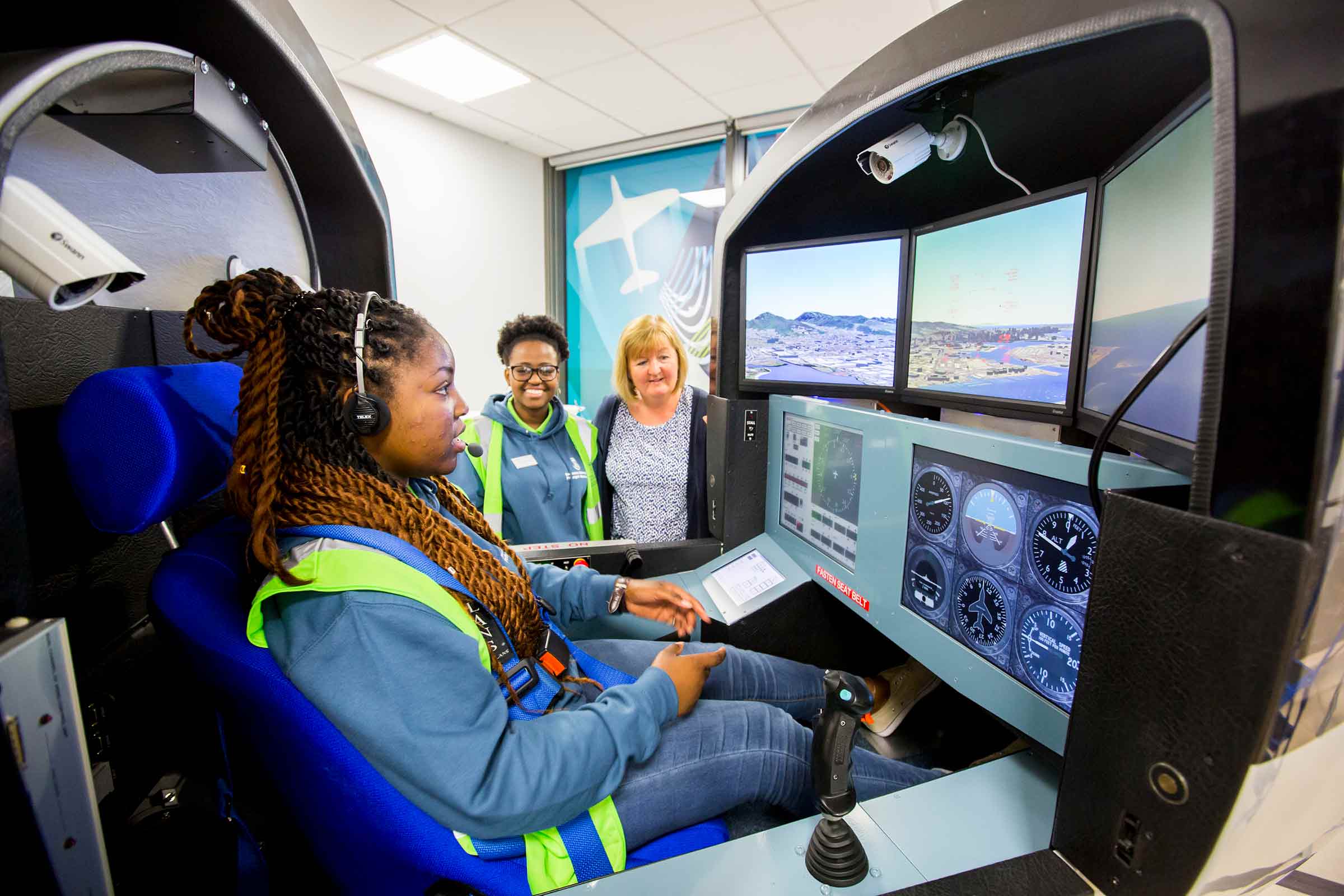
Merlin Flight Simulator MP521
The Merlin Flight Simulator was designed to teach the subjective aspects of flight. It is also used in all aspects of aircraft design, from stability and control evaluation to cockpit ergonomics, systems engineering and avionics. The MP521 simulator includes two of the following:
- A capsule module
- Six-axis hydraulic micro motion system from Bosch Rexroth
- Two 17” LCDs for the main instrument panel
- One 8” touch for ancillary controls
- Flight controls
- Visual display comprising three 19” screens
- Sidestick
- Throttles
- Rudder panels
Flight Sim
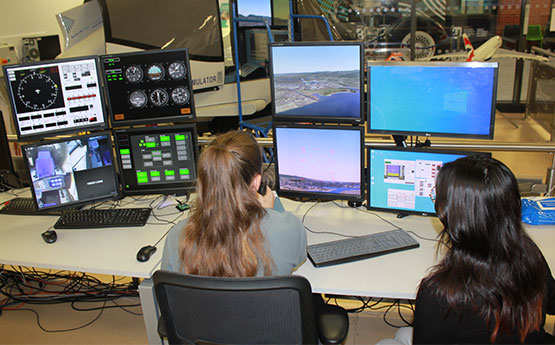
MP5200-2s – Developmental Stations
The MP500-2 UAV simulation development and control stations can be used as simulators in their own right. The latest upgrade has been designed with a cockpit-style cover, to mimic conditions within an aircraft. They also provide a simulation which can be integrated with an MP521 engineering Flight Simulator within an aerospace laboratory and used for interactive flight.
The MP500-2s can be used by researchers looking to investigate control and stability of UAV designs, ranging from scaled-up portable drones to full-size autonomous vehicles.
When integrated with Merlin's MPATC Air Traffic Control simulation station, and MP521 Engineering Flight Simulator, the MP500-2s can be used for research into piloting uninhabited air vehicles in a mixed manned/ unmanned air traffic environment.
Excalibur
Merlin's unique flight software, Excalibur, is a fully non-linear transonic, real-time six degrees of freedom aerodynamic application. Excalibur enables novel or existing designs to be created for the following types of aircraft:
- Single and multi-engine piston and turbo-prop aircraft
- Single and multi-engine jet and turbofan aircraft
- Gliders
- Fixed wing V/STOL
- Rotary wing aircraft with up to four rotors - and autogyros
- Aerostats (airships and balloons)
- Low earth orbit vehicles (horizontal or 'vertical' in take-off)
Excalibur enables researchers to 'flight test' novel designs to assess performance and achieve design objectives in complete safety. The designs may be realised using the Excalibur data editor, without writing computer code, using geometric design data produced in the aircraft course design process.
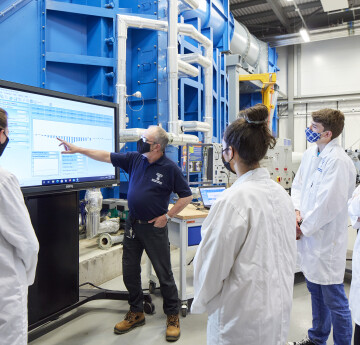
Wind Tunnel
Our aerospace engineering facilities include a custom-built £ 1.2 million wind tunnel facility, provided by ATE Aerotech, which is used in aerodynamic research to study the effects of air moving past solid objects.
The wind tunnel is 18m long x 7m tall x 5m wide with a test section of 1.5m wide by 1m tall and can generate wind speeds up to 50m/s (112 mph).
The wind tunnel includes a state-of-the-art Particle Image Velocimetry (PIV) system to measure fluid flow velocities in three dimensions, a high-precision three-dimensional model deformation measurement system, and an automated turntable system for pitch and yaw angle sweeps.
The tunnel design is a closed section, closed circuit system which is more energy efficient, quieter, and more consistent in airspeed and temperature. It also includes a novel, completely modular, transparent working section with high-resolution balances and LED lighting which will allow for unparalleled access, visibility, and versatility.
This allows the facility to be used for a variety of different activities and experiments, including researching advanced 2D airfoils, 3D wings, model aeroplanes with working engines, wind turbine blade sections, and even small-scale automotive testing over a wide range of flow conditions and Reynolds numbers.
Aerostructures Vibration Lab
- High-Performance Computing
- Engineering Workshop in Engineering East

